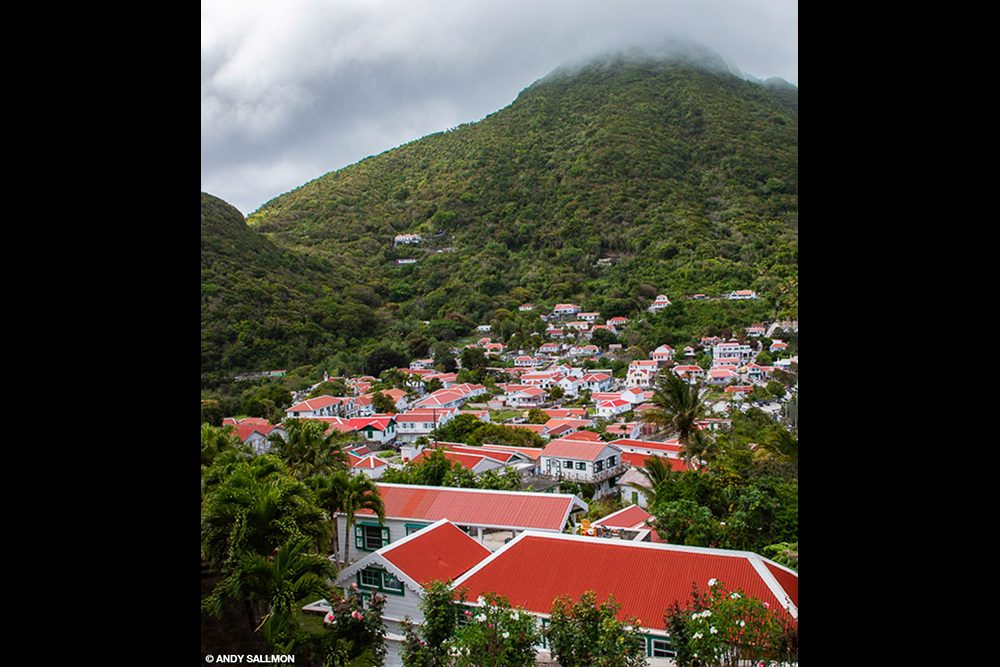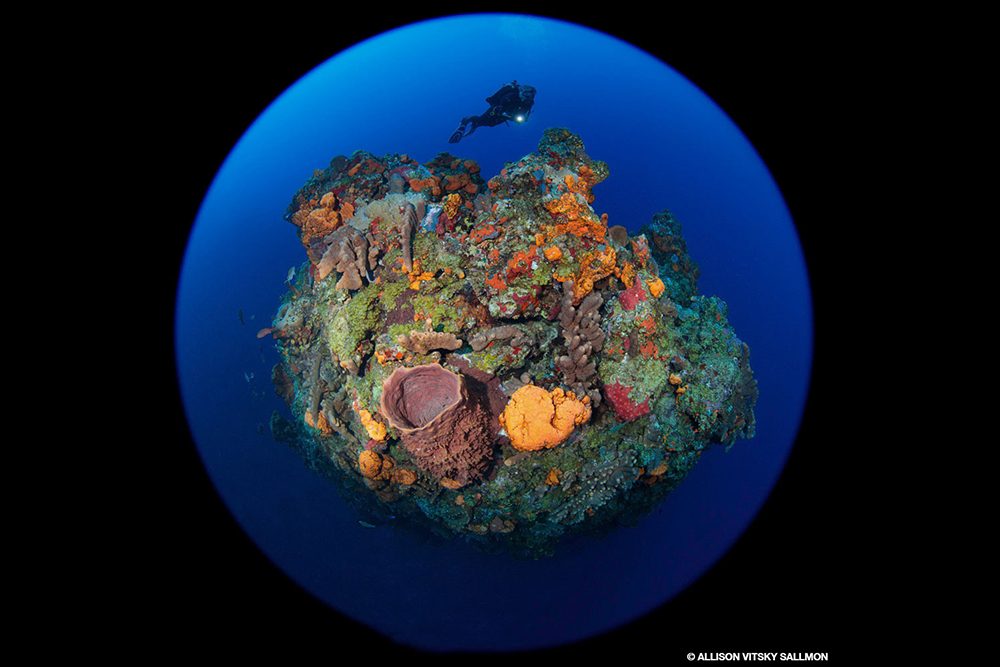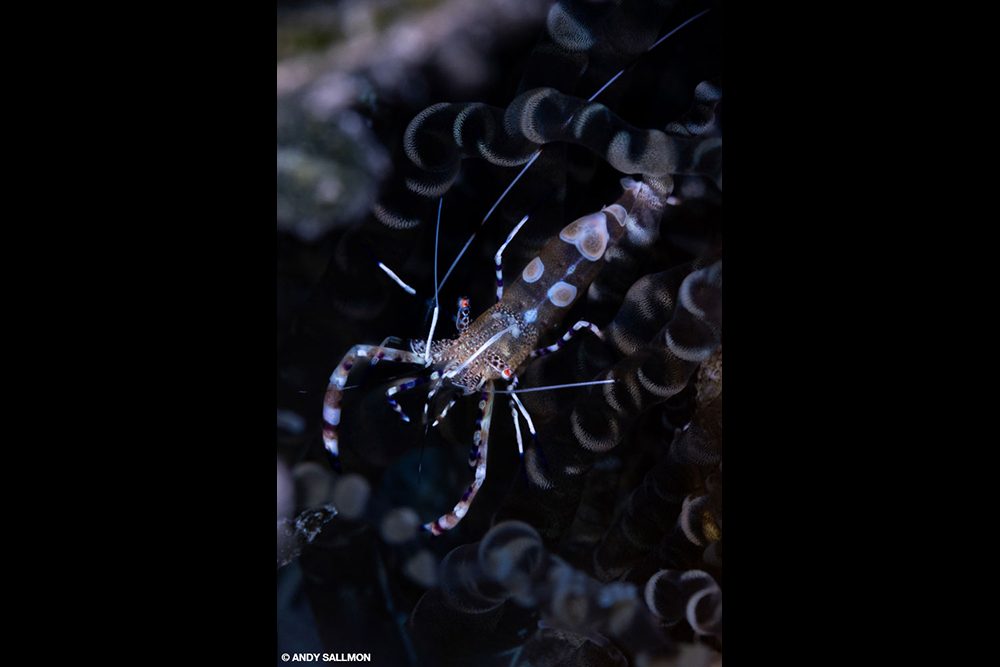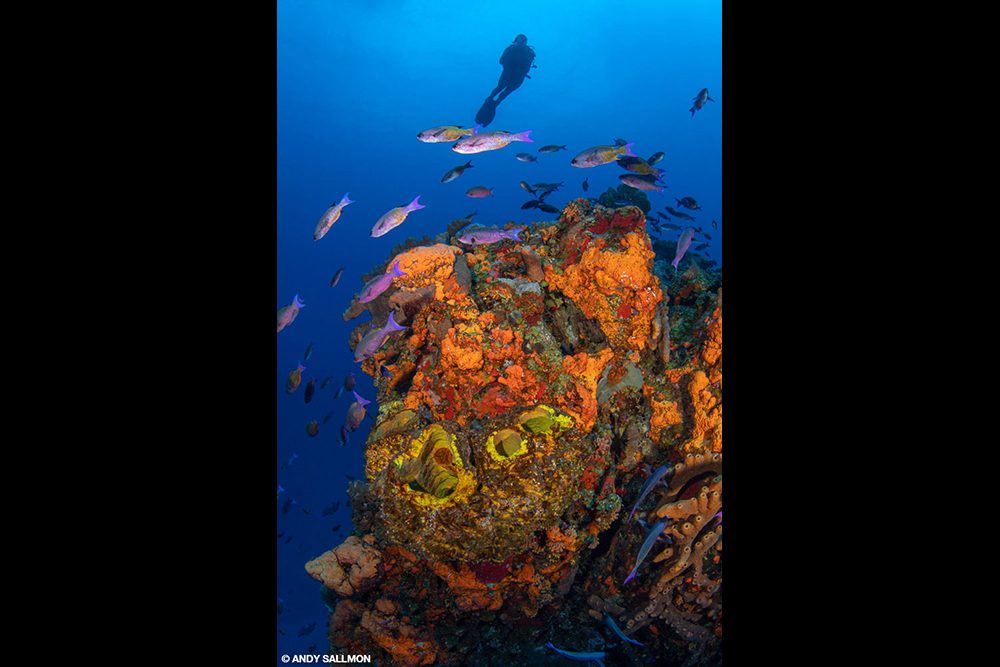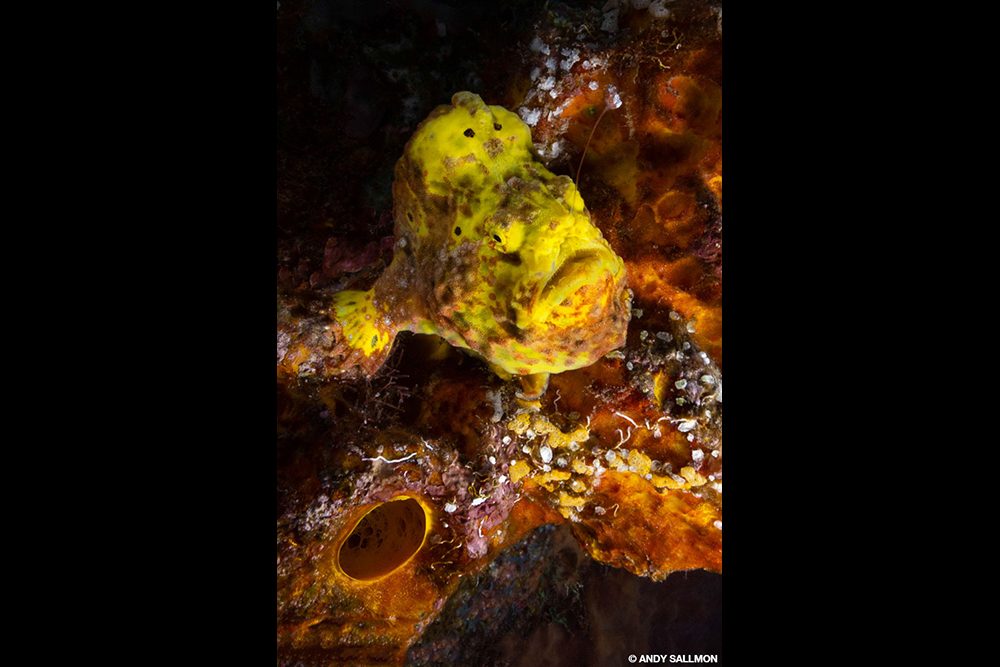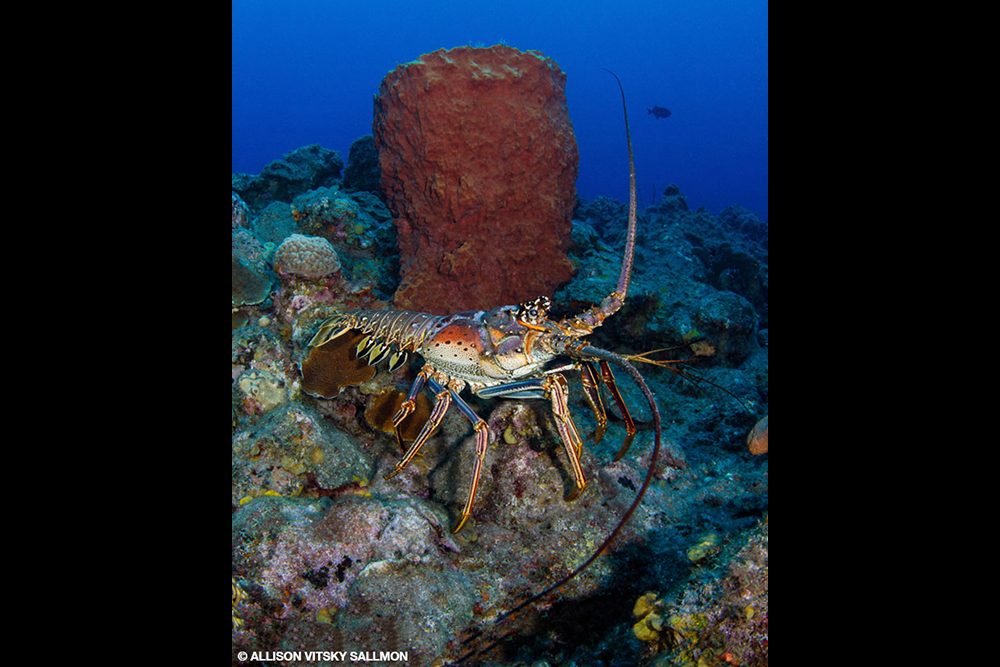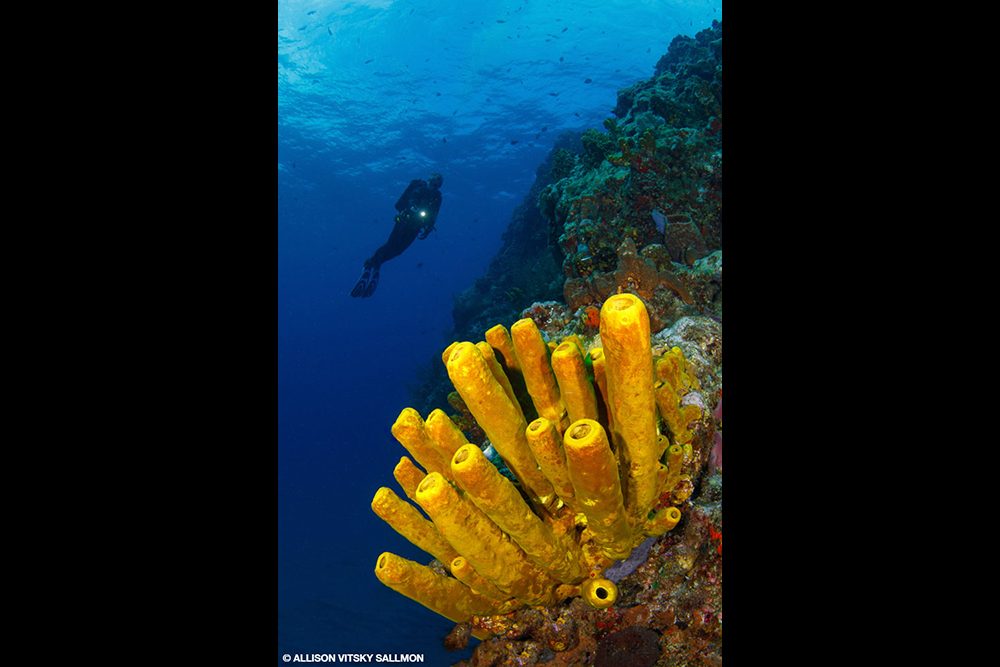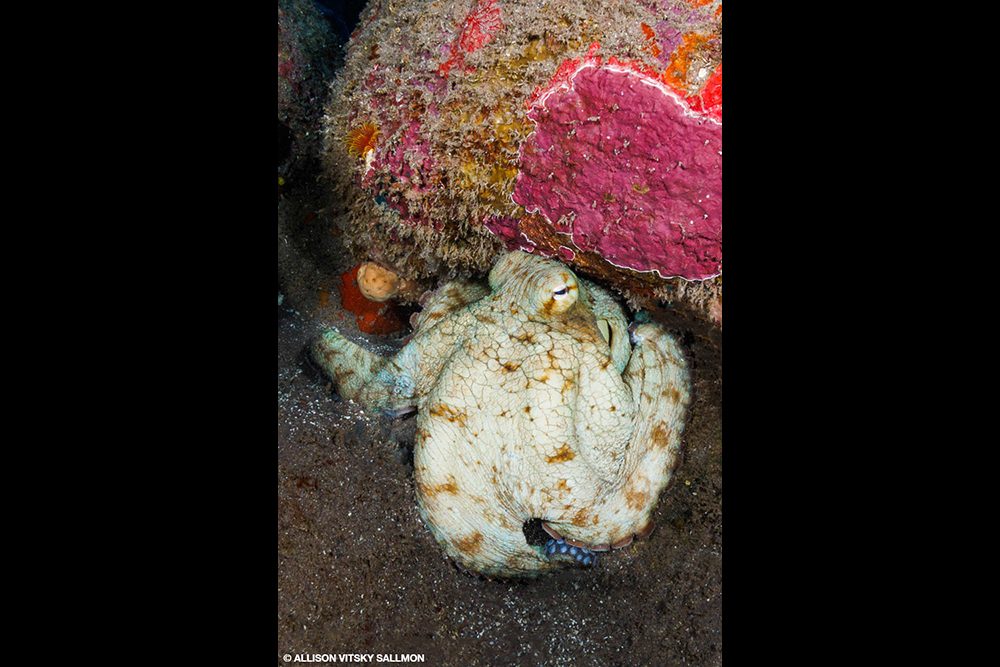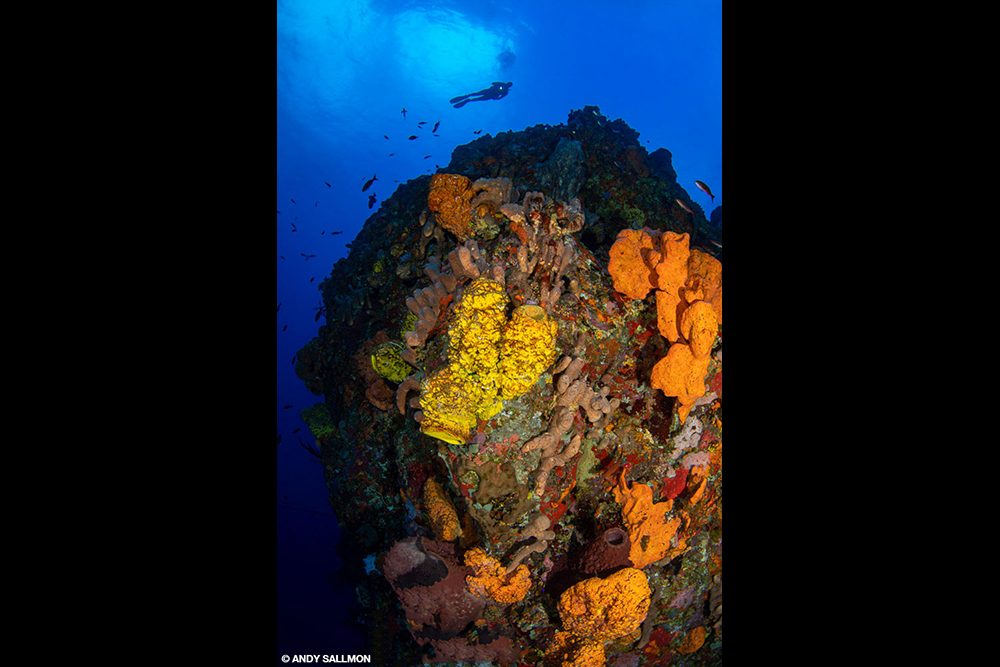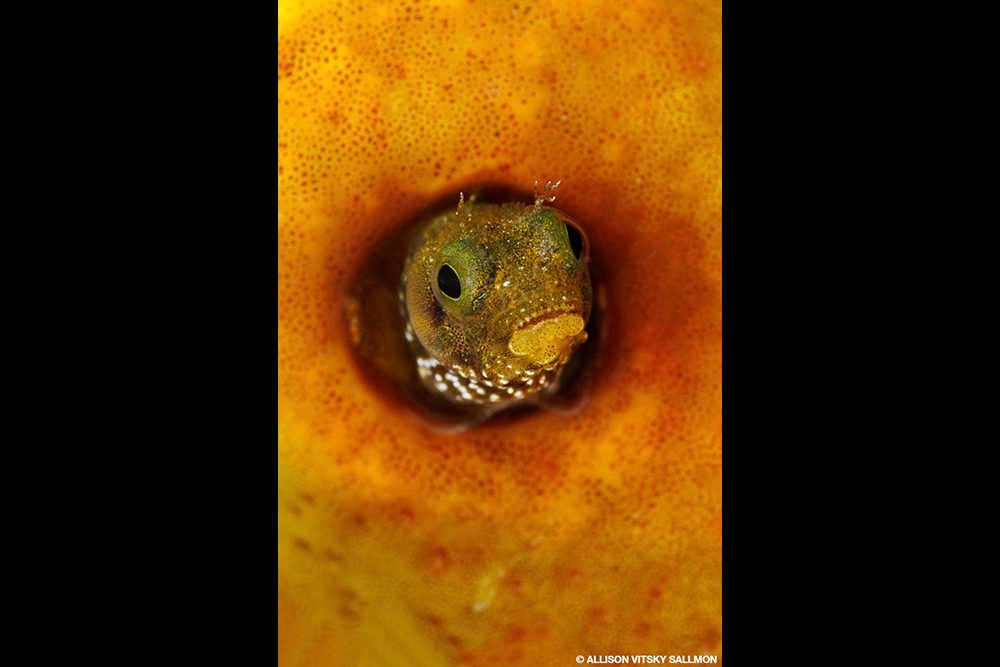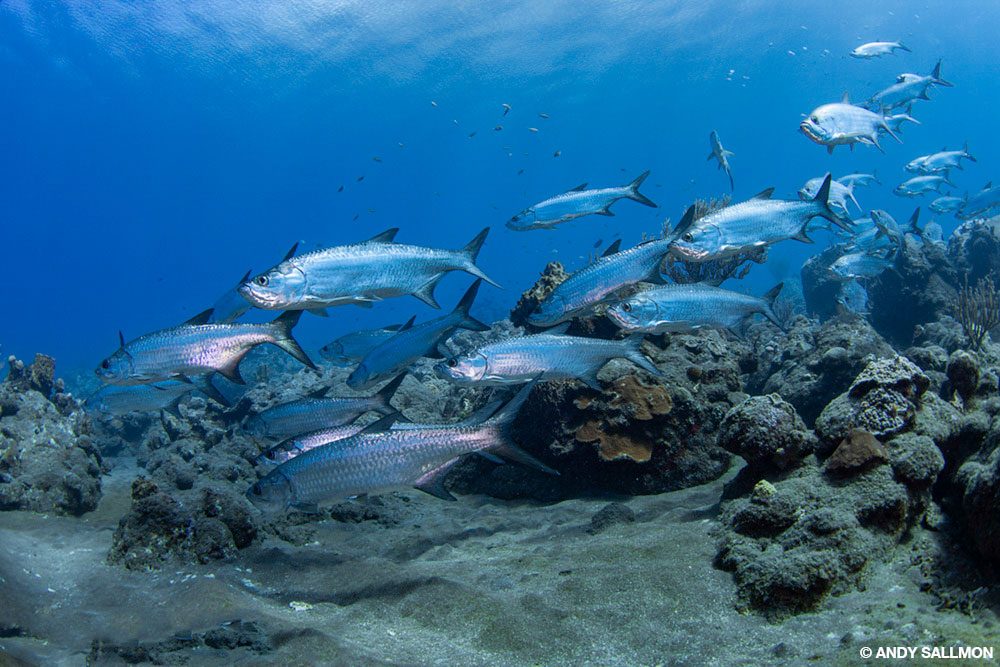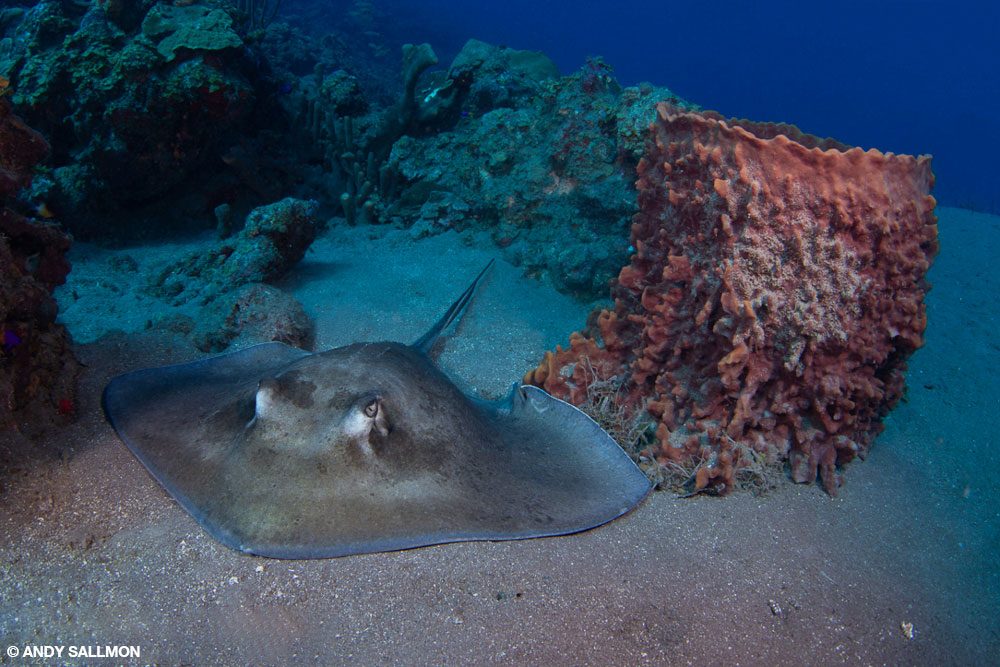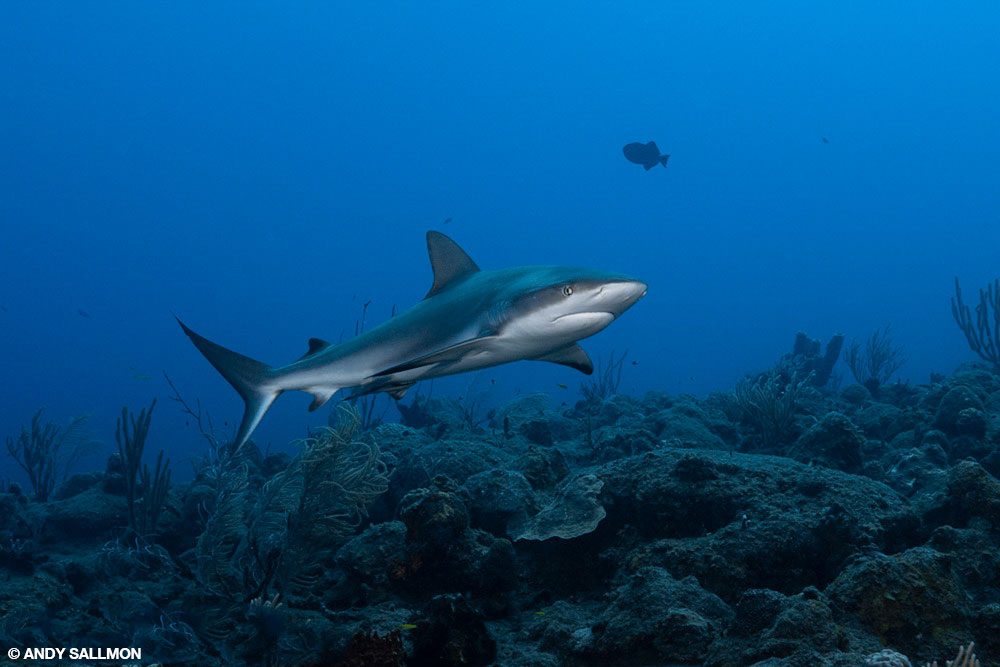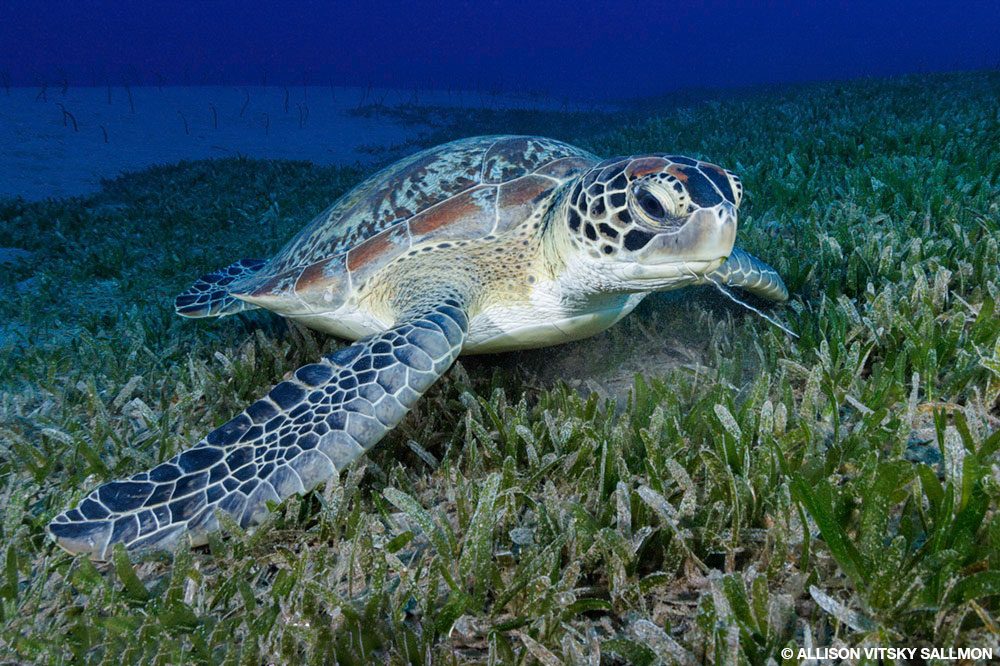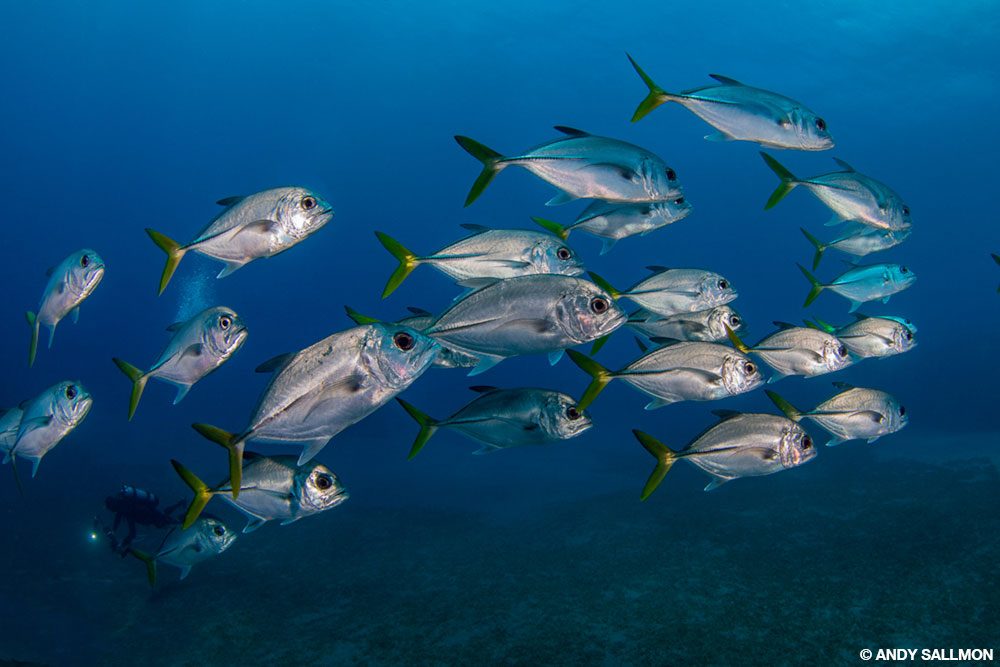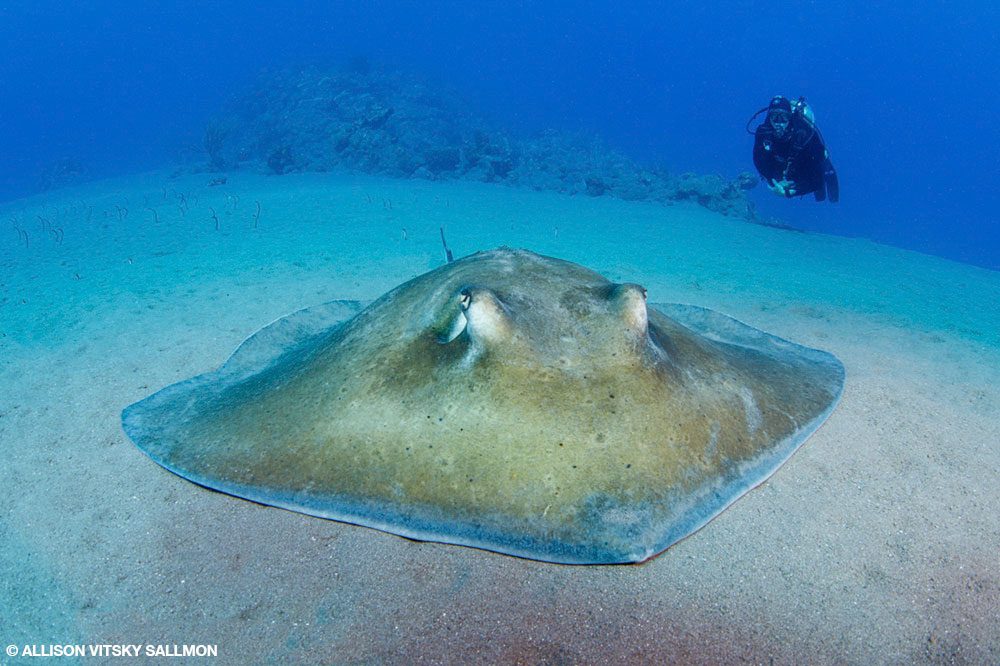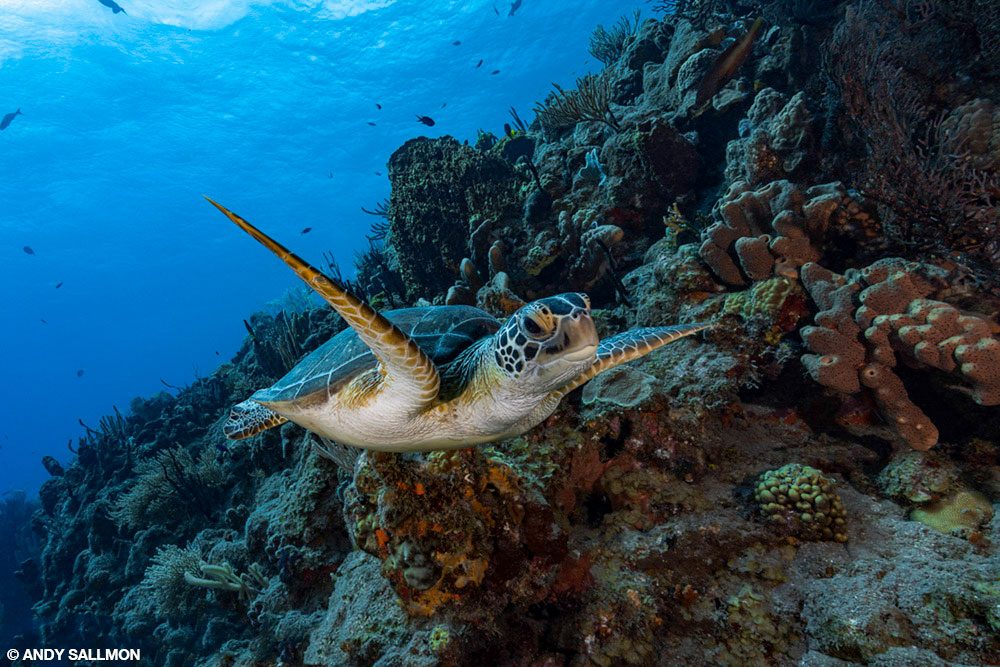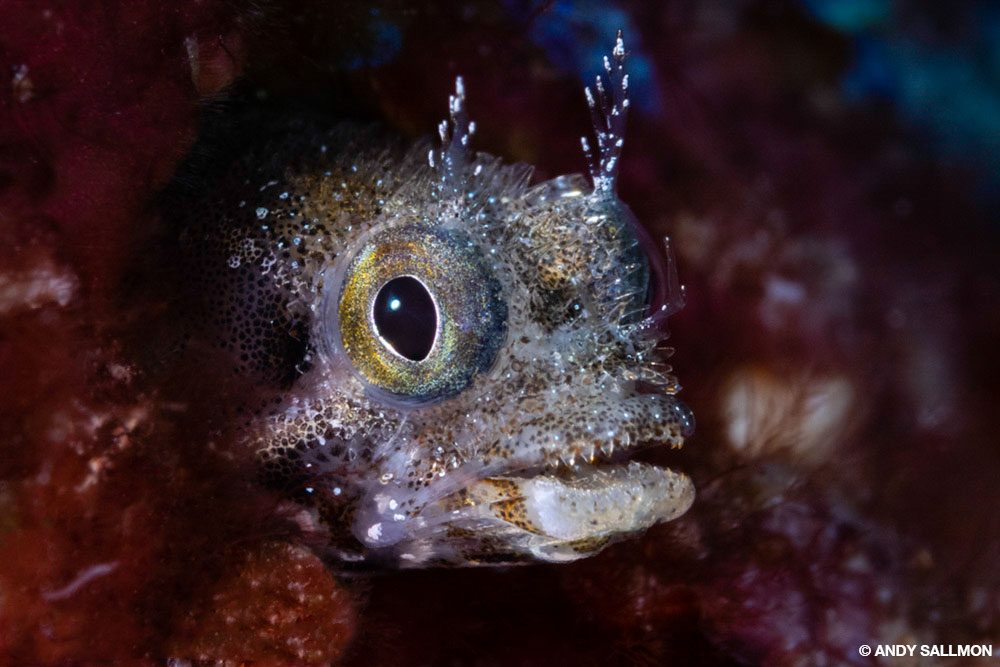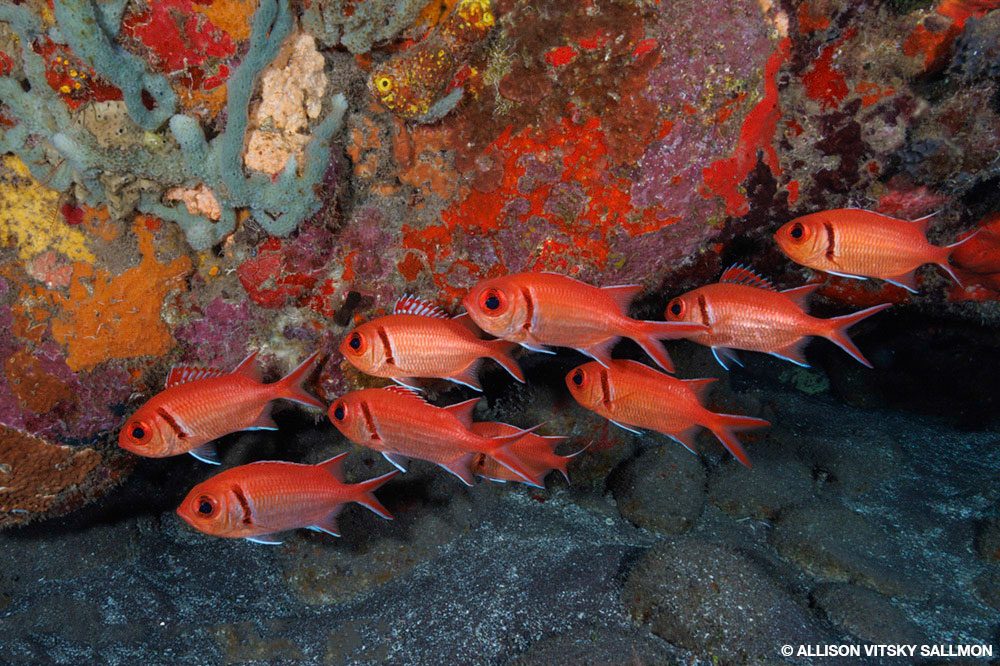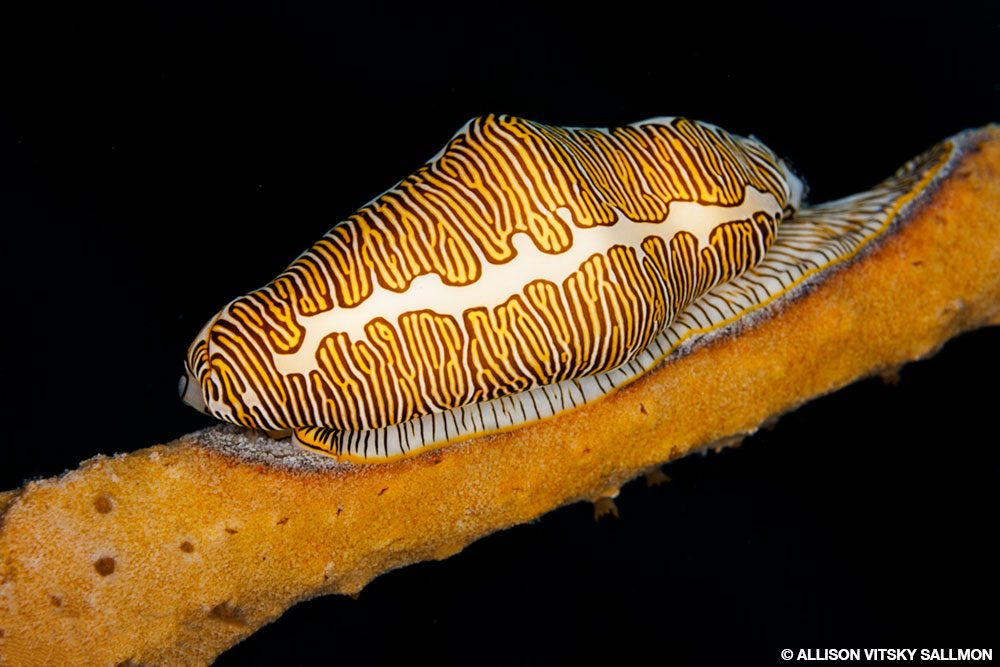Les orteils dans l'océan, la tête dans les nuages
JE SOUPÇONNE QUE MON AMOUR POUR SABA was set in motion the first time my father threaded King Kong onto our home projector. It was the original black-and-white film from 1933 — and if you’ve never viewed it, you should. I watched, enthralled, from my comfy beanbag chair as a ship carrying a film crew motored through the fog in search of Skull Island. The shores of a mysterious atoll, craggy rocks that rose straight up from the sea and disappeared into a wall of mist, were understood to be the gateway to untold marvels. The toothy, giant gorilla aspect of the film was less enthralling; I was a little kid, after all. But that towering island, that mist, that jungle! Even with my grainy view, those features seemed worth a difficult trek.
Decades later I feel like I’m finally getting my chance to experience them. The minuscule island of Saba — or its silhouette, at least — is rumored to be the muse for Skull Island. As the 5-square-mile speck comes into view, I completely understand the inspiration. The stark shoreline features a near-complete absence of beaches, while clouds top the island’s highest point, a volcanic peak fittingly named Mount Scenery. I am, as I was all those years before, enthralled. As the turboprop plane abruptly dips, comparisons end, and my attention focuses on our landing — specifically, identifying the tiny airstrip. The pilot has determinedly aimed the plane, presumably toward the airport, and we’re white-knuckling it down to the shortest commercial runway in the world.
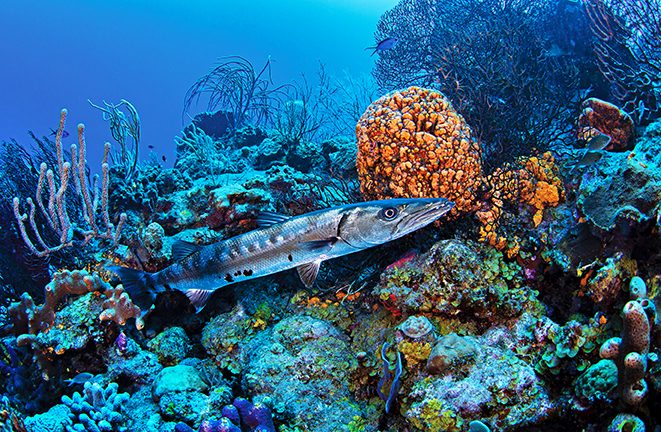
A great barracuda hovers in a cleaning station at the dive site called “Tent Reef Deep” in Saba.
It’s not long before we’re tucked into a cab and speeding uphill toward the village of Windwardside, our home for the next week. On other small islands this journey would typically be a fast endeavor, but it seems that few things on Saba are typical. The Road (capitalized because it’s the island’s main thoroughfare) is a perfect example. Also known as “the road that couldn’t be built,” this steep, zig-zaggy marvel took a determined Saban a correspondence course in engineering and two decades to construct.
Precipitous ascent aside, I’m glad I’m not driving — the vistas from every turn are magnificent enough to distract even the most capable driver. We swerve toward the clouds, ultimately stopping in front of a gingerbread-trimmed charmer with a spectacular view, like many lodgings here. We unpack our dive gear in silence, stealing glimpses at the clouds descending over Mount Scenery until they completely shroud it.
The next afternoon we are back in the cab for the twisty trip down to the dive boats in the harbor at Fort Bay, a stunning daily trek that’s an integral part of the Saba experience. Our initial dives are in nearby Tent Bay on Récif de la tente, and given the area’s adjacency to the harbor, we brace ourselves for a ho-hum experience. We’re laughably wrong. Before we’re even in the water, the divemaster is pointing out turtles, whose gleaming shells break the water’s surface at regular intervals.
Des couples de poissons-anges passent souvent devant une toile de fond incrustée d'éponges lumineuses sur le site emblématique de Diamond Rock.
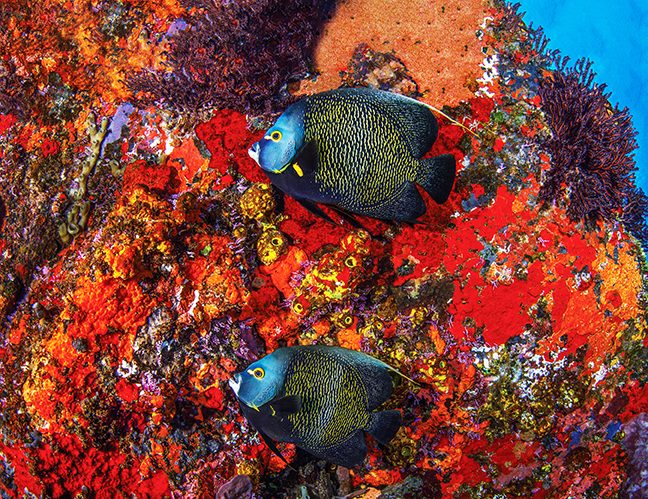
Nous descendons pour découvrir un paysage marin incroyablement varié, comprenant une arche menant à un labyrinthe de corniches peu profondes, un large plateau sablonneux parsemé de bommies et un lit d'herbes marines de la taille d'un terrain de football. Voilà qui explique la présence des tortues. Je compte cinq tortues vertes qui profitent du buffet, une autre qui fait la sieste sous une crête voisine et deux autres qui nagent paresseusement vers et depuis la surface. Des éponges, des gorgones et des coraux mous couvrent chaque centimètre carré du site qui n'est pas recouvert d'herbes marines, avec plusieurs rochers et récifs peuplés de masses d'éponges barriques aussi grandes que moi. On peut également observer des raies pastenagues en train de se nourrir, une pieuvre en train de chasser, un groupe de tarpons et des bancs de vivaneaux et de poissons-écureuils.
Without descending below 65 feet, I’ve seen an incredible variety of life and would happily do another checkout dive or two. Sheepishly, I recall one of the major reasons Saba’s diving is so renowned: the 1987 establishment of the Saba National Marine Park. After 35 years of protection, the reefs are bound to be spectacular. As we enthuse about our dives to one of the dive guides, we discover that the Tent Reef moniker encompasses several dive sites, including a deep, sprawling patch reef (Tent Reef Deep) that starts at 70 feet and slants into the blue. You can frequently spot Caribbean reef sharks here, so it’s popular among local divers. This area also features a wall dive (Tente Mur de Récif) that starts at 60 feet and then drops off into deeper water. The variety of marine life and structures has made Tent a fan favorite among repeat visitors. And since the location of this site means it’s protected and usually accessible, it’s a darling among the crew as well.
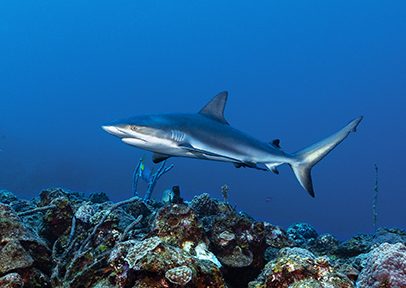
A Caribbean reef shark patrols Rays ‘n’ Anchors, one of Saba’s shallower reefs.
After circumnavigating the site, most of my fellow divers begin gazing into the open ocean to observe the Caribbean reef sharks weaving in the distance (and watch for the great hammerheads that occasionally appear here). I join them for a few minutes, but soon enough I’m distracted by a large lobster perched at the top of the pillar — and honestly more than a little curious about how long it took him to climb up there.
We’re filled with hope when we wake up the following day. The dive crew has officially checked us out, the sun is shining, and the marine conditions are perfect. On Saba this means one thing to visiting divers: pinnacle dives. If the tales are true, that’s something to get excited about because the pinnacles here are said to be in a class of their own. The island’s volcanic nature — already evident to us yesterday in the ledge formations of Tent Reef — is visible on a whole other level (pardon the pun) with these famed underwater features. The narrow spires rise from the deep seafloor to dive-accessible depths.
Le fait d'être en pleine mer offre la possibilité d'observer une vie marine incroyable, y compris des passants pélagiques, mais cela signifie aussi que les conditions et les courants peuvent parfois être un peu délicats. Ces sites sont toutefois bien adaptés aux plongeurs expérimentés de notre groupe aujourd'hui, et l'excitation sur le bateau est palpable alors que nous nous amarrons à Shark Shoal. Des coraux durs, de jolies anémones contenant des crevettes nettoyeuses, des éponges tonneau, vase et corde garnissent la pointe de ce magnifique pinacle situé à 90 pieds sous la surface. Les côtés sont abrupts et tombent dans les eaux profondes.
I squint briefly into the blue to locate the deeper nearby outcropping that tops out at 120 feet, but I’m unsuccessful. After circumnavigating the site, most of my fellow divers begin gazing into the open ocean to observe the Caribbean reef sharks weaving in the distance (and watch for the great hammerheads that occasionally appear here). I join them for a few minutes, but soon enough I’m distracted by a large lobster perched at the top of the pillar — and honestly more than a little curious about how long it took him to climb up there.
Ensuite, nous nous dirigeons vers la baie de Wells et le célèbre Le rocher du diamant, a landmark and dive spot rolled into one. Another of Saba’s famed pinnacles, this one breaks the surface and rises high above. Waves crash and sparkle along the gleaming pillar, which shines bright white in the sun. Our group of divers regards the rock with admiration, no one taking advantage of the situation to state the obvious: The beautiful coloration comes from copious bird droppings. There’s no way I can let that go by without mention.
No sooner have I opened my mouth to make a wisecrack about this entertaining divergence than a divemaster standing next to me on deck points out a white bird flying by, distinctive due to its long, elegant tail streamers. That’s no seagull. “Check it out!” she says enthusiastically. “A red-billed tropicbird! They’re so cool-looking. One of the largest colonies in the world is here.” I quickly snap my smart mouth shut, recalling that birdwatching is as serious a business on Saba as diving. Visitors are as likely to arrive with binoculars as with wetsuits. My guano joke is likely to fall flat, so it’s obviously time for me to get back in the water.
Diamond Rock is more pyramidal in shape than Shark Shoal, with a broad base that sits in a sandy, stingray-populated bottom at 80 feet. Despite its more approachable appearance, it can be every bit as advanced a dive, and our guide cautions us to stick together and watch our pressure gauges if we plan to circle the site. Distance, surge, and current can sometimes hamper divers’ abilities to complete a full orbit, and the boat crew may not see divers who surface on the opposite side of the rock. In opposition to its monochromatic topside appearance, underwater the rock is a blast of color, covered by sponges, cup corals, and stubby sea fans. I don’t make it very far from the mooring. The school of jacks that swirls at the western corner of the site grabs my focus first, followed by a giant barracuda that approaches from a distance to stare at our bubbly group, and finally the pairs of queen and French angelfish flitting to and fro in front of the colorful backdrop.



The next morning, we’re met once more with flawless conditions, so we motor toward the pinnacle. A hush falls over the boat as we approach the mooring at Troisième rencontre, arguably the most legendary dive site on Saba (and considered one of the best in the Caribbean, generally speaking). As beautiful as Third Encounter is, the namesake spot isn’t the cause for the fuss — that honor usually goes to an adjacent spire, L'œil de l'aiguille. Les deux piliers s'élèvent à une profondeur de 90 pieds, mais Third Encounter est plus grand, avec une forme incurvée en fer à cheval et un sommet plat, tandis que Eye of the Needle ressemble à une aiguille en équilibre sur sa pointe. Le plan de plongée habituel consiste à suivre la ligne d'amarrage jusqu'à Third Encounter, puis à naviguer vers et depuis le Needle avec l'aide d'un guide de plongée compétent.
Once we’re in the water, we realize we’ve struck gold: The visibility is outstanding, spectacular enough that we can see both pillars from 10 feet below the surface. We look at one another, nod, and head directly for the narrow pillar. The second pinnacle, which spans a mere 25 feet in diameter before plummeting straight down into the deep ocean, would be visually striking without any adornment, but it’s a circus of color and activity. Barrel, elephant, and rope sponges splash it with color, and fish swirl over the top while multiple Caribbean reef sharks patrol nearby. The site is exquisite and the conditions exceptional, easily moving the experience to among the top dives I’ve ever done. When the other divers show up at the Needle, we navigate reluctantly toward Third Encounter, exploring the coral- and sponge-encrusted plateau before ascending back to reality.
I wouldn’t want to be on the hook for selecting the site that follows Eye of the Needle, but the captain makes it look like an easy decision. We motor toward Wells Bay and moor just east of Diamond Rock at Man O’ War Shoals, yet another of this island’s famed dive sites (have you lost count yet?). We’ve barely begun our dive before realizing that this spot also lives up to the Saba hype. This wide-based rock structure rises from a sandy bottom at 70 feet and divides to form dual peaks that top off only 15 feet below the surface. The constant water movement has ensured thick sponge and cup coral cover over every inch of the structure. We’ve seen abundant fish life everywhere we’ve dived, but this site stands out, with schools of snapper and grunts sheltering under ledges and chromis rising from the reeftops. I’m trying to line up a photo of a great barracuda when I notice one of the dive guides gesturing to me. I swim over to see why she’s excited and spot a yellow frogfish perched in the red and orange sponges. Adorable. Admittedly, it’s not the best camouflage job on the part of the fish, but I’m not complaining.

The spectacular views on Saba, such as this gorgeous vista at Cove Bay, ensure hiking’s popularity as a topside activity.
The flawless weather has gone downhill when we look outside the next morning. A stiff breeze shuttles the clouds past our porch, and the ocean’s ridges and whitecaps are plainly visible from the elevated height of our lodgings. The captain confirms our fears when we arrive at the dock. We have to stick close to the island, so no pinnacles. Divers the world over are familiar with the mixture of dejection and panic that fills us when we hear the news. Our dive days here are limited and rapidly dwindling, but I tell myself to shake it off. We have an opportunity to explore Ladder Bay, and by now we’ve learned that all dives on Saba are worthy of anticipation.
Nous passons la journée à Maison de la Douane, named for the old building sitting high above the water and overlooking the mooring. This was once Saba’s landing site, and people had to carry cargo up the steep steps carved into the rocks. Although we can dive the site today, I watch the waves crashing into the nearby rocks and imagine it would have been impossible to offload freight in similar conditions. Talk about a great attitude adjuster — pinnacles or not, I’m exceedingly thankful to be diving rather than hoisting furniture off a boat or carrying it up that hill.
This site has been described to us as resembling a loaf of bread. Although accurate enough for the mounded reef structure that serves as the centerpiece, the description doesn’t do justice to the variety of marine life here. The reef starts at about 70 feet and reaches into the blue. At the shallower end, a parade of stingrays visits one of several cleaning stations every few minutes (lucky divers may spot them in pairs or trios), while Caribbean reef sharks and the occasional larger pelagic creature at the deeper end pass by in the open ocean. Southern stingrays feed and sleep in the sand around the reef, and if you follow the slope toward the island, a massive patch of seagrass ensures that you can regularly spot well-fed green and hawksbill turtles.
The wind picks up further over the next few days, and it quickly becomes apparent that conditions won’t allow us to revisit the pinnacles or Wells Bay. There’s no reason to let the weather dampen our enthusiasm, but it seems like a sign to pull out my macro lens and become acquainted with some of Saba’s smaller marine creatures. I’m excited about the prospect. Incredible macro life is everywhere, but it’s been impossible to capture with my wide-angle lenses. Ladder Bay sites such as Labyrinthe à échellesoù le récif s'est formé sur un enchevêtrement de coulées de lave, offrent d'abondants coins et recoins pour les créatures. Je passe mon temps à chercher des nudibranches et à photographier des cyphomères à langue de flamant et à empreinte digitale qui se nourrissent de coraux mous.
Lorsque nous retournons sur le fabuleux récif de Tent Reef, nous ne parvenons pas à localiser l'hippocampe à long bec que nous avions vu la semaine précédente, mais ce site est un véritable trésor de vie marine minuscule. Les blennies sortent de chaque trou dans les rochers et les coraux, et les crevettes commensales vivent dans les anémones et les éponges tubulaires. Même les amarres permettent d'observer de belles créatures, notamment des juvéniles de poissons-tambours, des crabes-flèches et un adorable poisson-grenouille blanc.
Even as I’m ending my dives here, the marine life reminds me of what I’ll miss. Reluctant or not, it’s time to head back — first to the surface and then home. We savor a final zig-zaggy trip up The Road, the cab swerving toward the mist one final time, closing a trip that’s more than worth the trek. AD

En remontant la route, on aperçoit le village de conte de fées de Windwardside avec, en arrière-plan, le mont Scenery coiffé de nuages.
COMMENT LE PLONGER
Pour s'y rendre : Saba est une municipalité spéciale des Pays-Bas. Cette île volcanique de 5 miles carrés et de 2 900 pieds d'altitude se trouve à environ 30 miles au sud-ouest de Sint Maarten. De nombreux transporteurs internationaux desservent Saint-Martin et, de là, des compagnies aériennes locales proposent plusieurs vols quotidiens de bimoteurs à turbopropulseurs à destination de Saba. Les vols sont strictement limités en poids et les bagages peuvent parfois être retardés. Il est donc conseillé de placer les objets importants dans des bagages à main. Un service de ferry rapide au départ de Saint-Martin est également disponible plusieurs jours par semaine.
Saisons : Water temperatures range from the upper 70s°F in winter to mid-80s°F in the summer. Most divers will be comfortable in a 3 to 5 mm full wetsuit. Daytime temperatures range from the low 70s°F to mid-80s°F year-round, though cooling northeast trade winds are often present at higher elevations. Rainfall can be common at night.
Plongée et conditions : The Saba National Marine Park extends around the island to a depth of 196 feet. A marine environment ordinance protects the coral reefs and other marine life within the park. All diving is by boat. Sea conditions vary, with the wind being the main factor. Saba’s pinnacle dives are considered advanced sites due to open-ocean conditions, including the possibility of strong and rapidly changing currents. Divers visiting these sites should carry surface marker buoys and keep a watchful eye on their air supplies. Nitrox certification is highly recommended for pinnacle diving. Saba also offers a variety of reef sites closer to shore that are more suitable for novice to intermediate divers. Visibility ranges from 50 to 100 feet. A recompression chamber is on the island.
Dessus : Saba propose une grande variété d'activités en altitude, notamment des randonnées à travers un large éventail d'écosystèmes (des bassins de marée du littoral à la forêt de nuages du mont Scenery), l'observation des oiseaux, l'artisanat et des programmes de sensibilisation à l'environnement uniques en leur genre. Visite de l'île seaandlearn.org pour obtenir des informations sur l'environnement à Saba. AD
EN SAVOIR PLUS
Découvrez Saba dans cette vidéo et dans une galerie de photos.
© Alert Diver - Q3 2022
